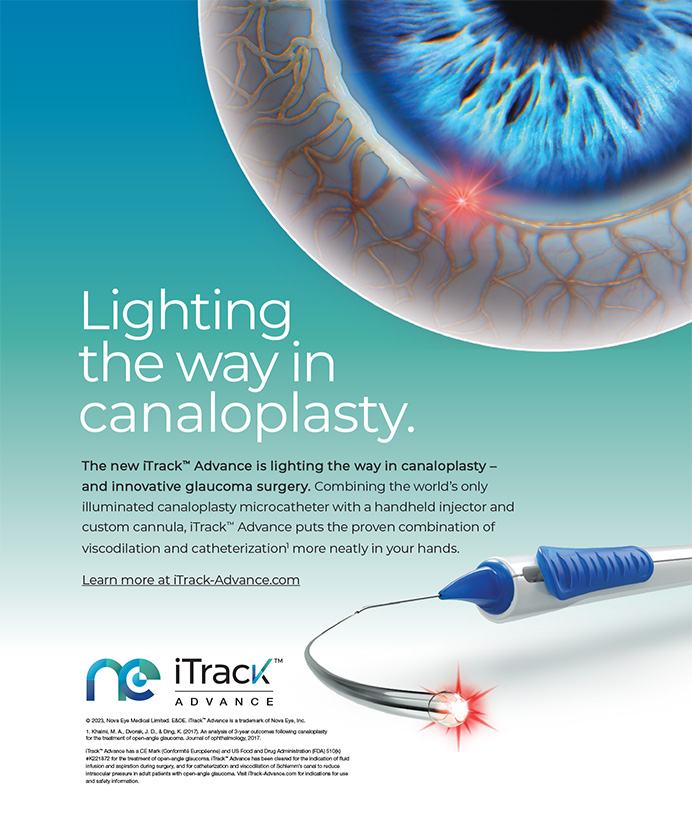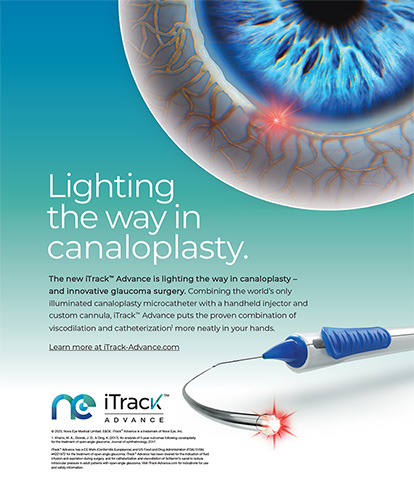| A bright young resident, born and bred in New York, decided in 1977 that Los Angeles was the most promising location to open a practice focused on cataract and implant surgery. Luckily for him, many of the surgeons who pioneered these procedures practiced in California and had broken down the usual resistance to these new and exciting operations. Upon opening his office, Samuel Masket, MD, began to concentrate on addressing problems related to the wound's closure and astigmatism. His results so impressed a prestigious traveling faculty that they invited him to join their group. It was just the beginning of a respected career that most recently includes the presidency of the ASCRS. As the old saying goes, cream always rises to the top. |
| —Section Editor, Herve M. Byron, MD |
When considering specialty training at the end of medical school, I was advised to select ophthalmology as a career only if it stimulated me and challenged me intellectually. Sage advice indeed!
EARLY EXPERIENCE
My early ophthalmic training in New York included basic research concerning ocular blood flow and a clinical interest in strabismus (I had postresidency training with Philip Knapp, MD, whom I continue to hold in very high regard). I published a number of basic research articles as a resident and was gratified recently to notice resurgent interest from Ioannis Pallikaris, MD, PhD, regarding some of my work from the 1970s.1
I relocated to Southern California in 1977 and was impressed by the marked local interest in phacoemulsification and lens implantation. Although I had been exposed to both technologies in their infancy during my training in New York, they were far more appreciated and developed in Southern California. The Los Angeles area became a hotbed for cataract-related bioengineering. It was not long before I met Richard Kratz, MD, who was remarkably generous in allowing me to learn phacoemulsification by observing his work. He remains one of my personal heroes. (The other Los Angeles pioneer in phacoemulsification, Robert Sinskey, MD, would become an important mentor and valuable friend to me later in my career.)
Among the most impressive techniques I saw while observing Dr. Kratz was the scleral pocket incision, now referred to as a sclerocorneal tunnel. I began using the technique for both extracapsular cataract extraction and phacoemulsification in the early 1980s. I was astonished to note the sclerocorneal tunnel's superiority to limbal incisions with respect to physical stability and, in particular, surgically induced astigmatism. The lesser astigmatic impact greatly piqued my curiosity, and I performed a number of clinical investigations and published a series of articles beginning in the late 1980s on the subject.2-6
INSPIRATION AND TECHNICAL INNOVATION
In the mid-1980s, fewer than 10 of US ophthalmologists routinely employed phacoemulsification. Nevertheless, William Maloney, MD, who possesses remarkable organizational skills, developed a syllabus to aid transitioning surgeons. The program, "Three Steps to Phaco," was based on Dr. Kratz's iris plane method of phacoemulsification and was offered as a series of weekend courses for transitioning surgeons over several years in the late 1980s and early 1990s (Figure 1). I was part of the permanent traveling faculty and regularly provided instruction on the wound's construction, its closure, and surgically induced astigmatism. The faculty for those courses and others consisted of many ophthalmologists who became household names as well as my long-term friends. Among them were Alan Crandall, MD; David Dillman, MD; I. Howard Fine, MD; Robert Osher, MD; Douglas Koch, MD; Stephen Lane, MD; Irving Raber, MD; Paul Koch, MD; James Davison, MD; William Fishkind, MD; Paul Ernest, MD; Stephen Brint, MD; Marc Michelson, MD; Roger Steinert, MD; W. Andrew Maxwell, MD; Lee Nordan, MD; D. Michael Colvard, MD; Donald Serafano, MD; Stephen Johnson, MD; Jack Kearney, MD; Marguerite McDonald, MD; and Sheri Rowen, MD. When the courses eventually expanded internationally, I befriended Almir Ghiraroni, MD; Matteo Piovella, MD; Lucio Buratto, MD; and Phillipe Crozafon, MD, among others.
It was an exciting era in cataract surgery. At each course, the faculty demonstrated new techniques, and we all learned from and stimulated each other. We could hardly wait for the next meeting to "show our stuff" or to see what the others were doing to improve either the surgery or the method of its teaching. This friendly competition helped increase the number of phaco procedures performed worldwide. The courses resulted in the development and dissemination of techniques for the wound's construction, astigmatic management, nuclear emulsification, the IOL's implantation, anterior vitrectomy, and complication management. Inspired by Dr. Osher's innovative work, I became interested in and developed methods for managing complex situations in cataract surgery and demonstrated unusual case management during the courses. I published my techniques for managing a small pupil, in those days a relative contraindication for phacoemulsification.7
Soon, the manufacturers of surgical machinery, IOLs, and phaco equipment offered educational courses of their own in which I participated as faculty domestically and internationally. Together, clinicians and companies forged a surgical industrial complex that made small-incision cataract surgery the single best cost-to-value procedure worldwide. Additionally, organizations such as the ASCRS and the AAO became invaluable sources of education for anterior segment surgery, which led me to become an active member of both.
The years brought advances in lasers, IOLs, phaco machinery, and pharmaceuticals in relation to cataract surgery. With improved techniques, technology, and adjunctive agents (ophthalmic viscosurgical devices in particular), the indications for cataract surgery expanded, results improved, and surgeons of almost all skill levels became able to achieve successful results with phacoemulsification. When I began performing the procedure in 1981, roughly 5 of ophthalmologists were using phacoemulsification; that number has grown to greater than 95. I remain grateful to have participated in that quiet revolution, which shaped my career.
FOCUS
As a result of my interest in complex and complicated cataracts, Stephen Obstbaum, MD, then Editor of the Journal of Cataract and Refractive Surgery, appointed me Consultation Section Editor in the early 1990s, a position that I still hold (and now share). As a result, my practice became focused on cataract surgery.
Over the years, I have published on various aspects of cataract surgery, including the iris chafing syndrome, glare disability, complications of the capsulorhexis such as capsule block syndrome, piggyback IOLs, pediatric cataract surgery, dysphotopsia, IOL design, endophthalmitis, intraoperative floppy iris syndrome, and post-LASIK IOL power calculations.8-18 I remain passionate about the cataract incision, particularly in relationship to physical stability, hermetic sealing, and postoperative endophthalmitis. I have performed experiments with the IntraLase FS laser (Advanced Medical Optics, Inc., Santa Ana, CA) for creating anatomically reproducible cataract incisions, and my presentation on the subject at the ASCRS annual meeting in 2005 was named the best paper of the session.19 I also recently published an article regarding the astigmatic advantages of microcoaxial phacoemulsification.20
Without a doubt, cataract surgery continues to represent for me an intellectual challenge as well as a demanding surgical skill.
Section Editor Herve M. Byron, MD, is Clinical Professor for the Department of Ophthalmology at the New York University School of Medicine in New York. Dr. Byron may be reached at (212) 249-8494; hervembyron@gmail.com.
Samuel Masket, MD, is Clinical Professor of Ophthalmology at the University of California, Los Angeles. He acknowledged no financial interest in the product or company mentioned herein. Dr. Masket may be reached at (310) 229-1220; avcmasket@aol.com.


